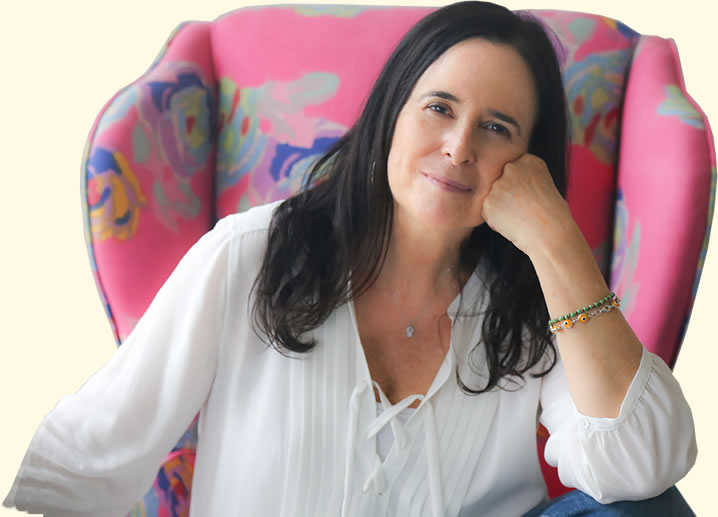Today I’m featuring a guest post by author Ruth Behar, whose books feature complicated mother-daughter relationships. Read on at the end of her post for more info about the author and her books.
Relationships between mothers and daughters are always at the heart of my stories. In my first middle-grade novel, Lucky Broken Girl, which is based on my own life, Ruthie, an immigrant girl from Cuba, is suddenly bedridden because of a severe leg injury that takes place in 1966 in a car accident. Ruthie must depend on her beautiful young mother, who gives up her nights out, pretty outfits, and high heels to care for her, creating painful moments of resentment between them. In my next novel, Letters from Cuba, a Polish Jewish girl, Esther, the eldest child in her family, finds her way to Cuba in 1938 and leaves behind an exhausted and enraged mother and four siblings in hopes of helping a father who has been a poor businessman and failed to bring the rest of the family to safety. Once in Cuba, Esther realizes how her mother was stern with her because she needed her so much. She comes to appreciate that her mother taught her the valuable skill of sewing dresses. That skill, used by Esther with her unique creativity, becomes the magical means of getting the family out of Poland in the nick of time.
My latest novel, Across So Many Seas, begins in 1492 as the Edict of Expulsion is proclaimed in the city of Toledo in Spain. Twelve-year-old Benvenida hears it for the first time, her mother whispering to her that it doesn’t bode well for them as Jews. That’s when Benvenida learns they must either convert to Catholicism or leave their Spanish homeland. Her immediate family chooses to leave to maintain their faith, but her extended family decides to convert in order to stay. This fracturing of the family is painful, and Benvenida finds comfort in writing poetry. The reason she can read and write is because her mother has taught her. Girls in that era were rarely literate. Her mother came from a family of printers, so she learned to read and write. She teaches her daughter, but Benvenida goes a step farther, writing poetry, something inconceivable for girls in that era. In her poems, she unveils her feelings, her sense of loss, the memory of the nightingales singing, and her hope for a new home elsewhere. She writes one poem on a parchment and tucks it into the wall of the courtyard surrounding their home as she is departing, to leave her words behind for the unknowable future.
In the next part, we meet Reina in 1923, just as the Ottoman Empire has fallen and Turkey is becoming an independent nation. Reina and her three sisters, mother, and father are wondering what this change will mean for them as Sephardic Jews who descend from ancestors who left Spain in 1492. They have maintained the Spanish language, even centuries after the expulsion, and fear that Turkey will now impose nationalism and they will only be allowed to speak Turkish. Reina, who is twelve, looks forward to the freedom that has been promised to girls and women. But she disobeys her father, who punishes her by declaring her dead and arranging for her to go to Cuba and be married off in three years’ time. In the midst of this heartbreak, as she prepares to leave home, her mother teaches her old songs from Spain and how to play the oud. Reina will never see her mother again, but she will remember her forever through the sad words of the songs.
In the third part, it is 1961, and Alegra, the daughter of Reina, is twelve and growing up in the idealistic era of the Cuban revolution. She dreams of participating in the literacy campaign and teaching people in the countryside how to read and write. Her father won’t allow her to go, but her mother gives her permission, wanting her to have the freedom she never had. Then, in the fourth and final part, we meet Alegra’s daughter, Paloma, who is twelve in the year 2003. She seeks to understand the legacy passed on to her by her ancestors. She turns to her grandmother Reina to learn the sad songs from Spain and to her mother Alegra to understand the power of words to connect with those who came before. Paloma will be the one who, while vacationing in Spain with her family, will be in awe of the parchment that has been found with some mysterious words at the Sephardic Museum in Toledo, and she will feel the connection to Benvenida. Time will slip away and the past won’t seem so distant…
In all three novels, I’ve come to see how mothers and daughters take journeys together, mothers passing on knowledge, hope, and the possibility of freedom to their daughters, and daughters actively accepting this heritage, and finding their way forward.
Bio: Ruth Behar is a Cuban-born anthropologist and writer of books for young people. She won the Pura Belpré Award for her middle-grade novel, Lucky Broken Girl. Her second novel, Letters from Cuba, was selected for the Kirkus list of best historical fiction. Her picture book, Tía Fortuna’s New Home, is on Kirkus and School Library Journal best book lists. She and her son, Gabriel Frye-Behar, co-authored Pepita Meets Bebita, a picture book about the joys of family. Behar’s new novel, Across So Many Seas, will be released on February 6, 2024. The first Latina to win a MacArthur “Genius” Grant, Behar teaches at the University of Michigan. Find her online at https://www.ruthbehar.com/, @ruthbehar (X), and @ruthbeharauthor (Instagram).


